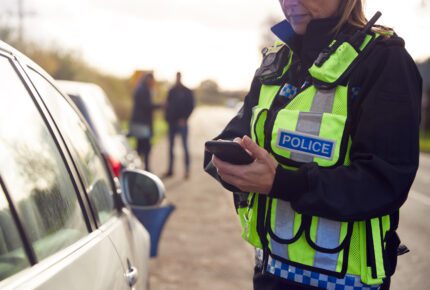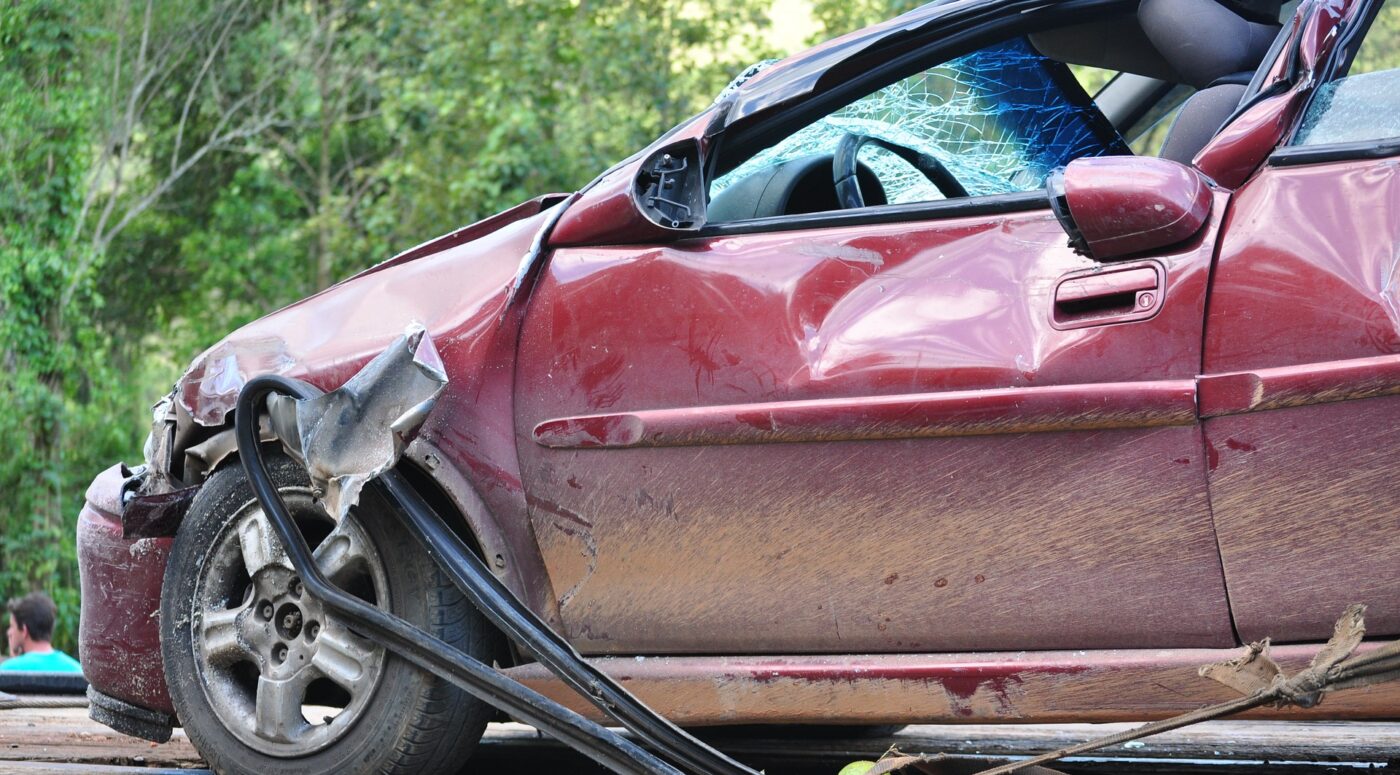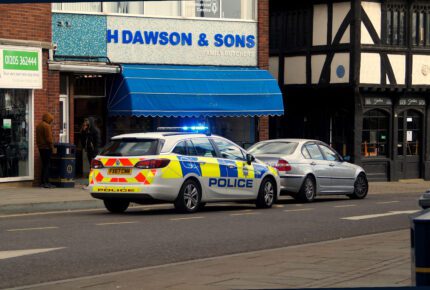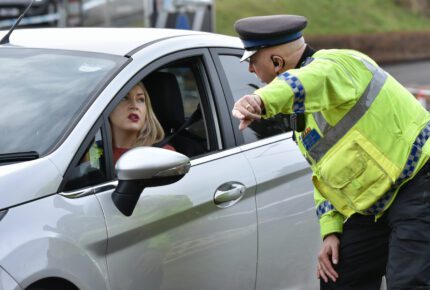

Nearly all of us have been there: a momentary lapse in concentration whilst behind the wheel, and before you know it, an unsafe situation has emerged. Nine times out of ten, nothing comes of it, but there is always that one occasion where you find yourself involved in an accident or you see those ominous blue lights flashing behind you. If you have found yourself on the wrong side of the traffic police, you may be wondering how serious the offence is that you are facing and the punishment that you could face if you are convicted. You may also be wondering whether it is worth challenging the fixed penalty notice you have been handed by the police. Both careless driving and dangerous driving are criminal offences, but the penalties that you could face if convicted are very different. Careless driving relates to poor driving that could or has endangered other road users. Meanwhile, dangerous driving covers activities that are blatantly reckless and unsafe. Read on to understand more about these two offences.
What counts as dangerous driving in the UK?
The offence of dangerous driving is established by Section 2A of the Road Traffic Act 1988. This states that driving is dangerous where it:
- falls far below what would be expected of a competent and careful driver, and
- where it would be obvious to a competent and careful driver that driving in that way would be dangerous.
The law says that dangerousness relates to either injury to any person, or serious damage to property. When assessing whether a driver’s conduct was dangerous the court will look both at circumstances the driver could have been expected to be aware of, as well as those within his or her knowledge. These circumstances will include an assessment of the state of the vehicle and anything attached to it or carried within it.
According to the CPS, the following activities amount to dangerous driving:
- Aggressive driving
- Speeding or racing
- Ignoring traffic lights or road signs
- Failing to heed the request of passengers to slow down
- Dangerous overtaking, such as cutting in too close to the vehicle that you have passed
- Driving whilst under the influence of alcohol or illicit drugs
- Driving whilst under the influence of prescription drugs where the drug manufacturer or your doctor have warned that it would not be safe to drive whilst using them
- Driving whilst you have an injury which makes you unfit to drive, or being unable to see clearly
- Driving whilst feeling sleepy
- Choosing to drive a vehicle which you are aware has a dangerous fault or an unsafe load
- Driving whilst being avoidably and dangerously distracted, e.g. by using a handheld phone or other equipment, looking at a map, talking to passengers, smoking, or changing the radio station. These are just examples, any distraction that makes driving dangerous could qualify.
Is careless driving a criminal offence in the UK?
Careless driving is an offence under Section 3 of the Road Traffic Act 1988. It is defined as driving ‘without due care and attention, or without reasonable consideration for other persons using the road or place.’
When assessing whether a person is guilty of this offence, the court is obliged to consider whether the defendant’s driving has fallen below the standard of a careful and competent driver. This is an objective test. CPS guidance provides the following examples of careless driving:
- Using the inside lane to overtake
- Not leaving a suitable gap between your vehicle and the one in front, also known as ‘tailgating’
- Accidentally jumping a red light
- Turning across the path of another vehicle
- Driving whilst distracted by something within the car, such as changing channels on the radio, or smoking a cigarette
- Using your horn or lights in order to force other drivers to give way where it is their right of way
- Using the wrong lane to pass static traffic, e.g. using a filter lane to overtake
- Driving in the overtaking lane unnecessarily
- Driving unreasonably slowly or braking suddenly without good reason
- Using your full beam headlights where there is oncoming traffic
According to the AA, wheel spins, handbrake turns, and eating or drinking at the wheel can also amount to careless driving.
As you can see, there is some overlap in the types of activities that could be considered careless or dangerous. Whether an activity is careless or dangerous depends on the mindset of the driver, as well as the impact of the activity on other road users.
For example, a driver who becomes distracted by lighting a cigarette and bumps into the bumper of the car in front but without causing any serious damage would probably be charged with careless driving. Meanwhile, if you lit a cigarette whilst travelling at 70 miles per hour on the motorway, leading to a crash that caused a major pile up, then you would be charged with dangerous driving.
Is it an offence to drive whilst using a mobile phone?
Driving whilst using a mobile phone can be careless or dangerous driving. However, it is also a separate offence on its own. It is illegal to hold your phone, satellite navigation system, or tablet whilst driving a car or motorbike. This applies even if the device is offline. You are still considered to be driving if you are stopped at traffic lights, queuing in traffic, supervising a learner driver, or driving a vehicle which turns its engines off when you stop moving.
There are exceptions to this if you need to make an emergency call and it’s unsafe or impractical to stop; if you’re safely parked; or if you are making a contactless payment in a vehicle that is not moving such as a drive-through restaurant. You can use your device handsfree, but you could still be committing an offence if it causes you to drive carelessly or dangerously.
How many points do you get for careless driving in the UK?
If you are convicted of careless driving, you will receive 3 points on your licence. You can receive an ‘on the spot’ penalty of the points on your licence, plus a £100 fine known as a ‘fixed penalty notice’. Drivers may also be offered the opportunity to undergo remedial training.
If you believe that you were penalised unfairly, you can challenge a fixed penalty notice by requesting a court hearing. If the court finds that your driving was careless, you could receive a much heftier fine. As such, it is usually only worth challenging a careless driving fixed penalty notice where you are fairly confident that the court will dismiss the charge against you. If you are unsure, speak to a criminal defence solicitor for advice tailored to the facts of your case.
Is careless driving the same as reckless driving?
There is no specific offence of reckless driving in English law. Reckless driving could be categorised as careless or reckless, depending on the severity of the conduct.
In addition to the offences of careless and dangerous driving, there are separate offences of ‘causing death by careless driving’ and ‘causing death by dangerous driving’. The table below shows the different dangerous and careless driving offences, and the penalties that you could face if you are convicted.
| Offence | Penalty |
| Careless driving | If dealt with by way of fixed penalty notice:
Three penalty points A fine of £100 If the case goes to court, the court could impose a more severe penalty |
| Dangerous driving | Custodial sentence: up to 5 years
An unlimited fine Or both Disqualified for a minimum of 1 year |
| Driving using a mobile phone | 6 Penalty points
£200 Fine You could also lose your licence if you have passed your test in the last 2 years |
| Causing death by careless driving | Custodial sentence: up to 5 years
Disqualified for a minimum of 1 year |
| Causing death by dangerous driving | Custodial sentence: 1 – 14 years
In some circumstances, you could receive a life sentence Disqualified for a minimum of two years |
| Causing death by dangerous driving when under the influence of alcohol or drugs | Custodial sentence: 1 – 14 years
In some circumstances, you could receive a life sentence An unlimited fine Or both Disqualified for a minimum of two years |
| Causing serious injury when driving dangerously | Custodial sentence: up to 5 years
Disqualified for a minimum of two years
|
As you can see, the penalties for careless and dangerous driving offences vary hugely depending on the circumstances. Speak to a criminal defence solicitor for advice on the likely sentence in your case.
Where to get further help?
If you have been accused of a careless or dangerous driving offence, make sure that you instruct a criminal defence solicitor who will take your case on with focus and motivation. At Stuart Miller Solicitors, we have successfully defended thousands of clients on careless and dangerous driving charges. Whether you are facing a trial for a minor infringement or a serious accident, contact us for a no obligation consultation today.
OUR COMMITMENTS TO YOU:
-
Responsive
A legal expert will consult you within 24 hours of making an enquiry.
-
Empathetic
We will always treat you with trust, understanding and respect.
-
Specialised
Your case will be handled by an expert who specialises in your type of offence.
-
Proactive
We will take early action to end proceedings as soon as it is practically and legally possible to do so.
-
Engaged
You will be kept updated on your case at all times. We will provide a named contact available to answer your questions.
-
Caring
We understand this is a difficult and stressful time for you and your family. Our team will support you every step of the way.
-
Tenacious
We will never give up on your case. We fight tirelessly to get you the best possible outcome.

